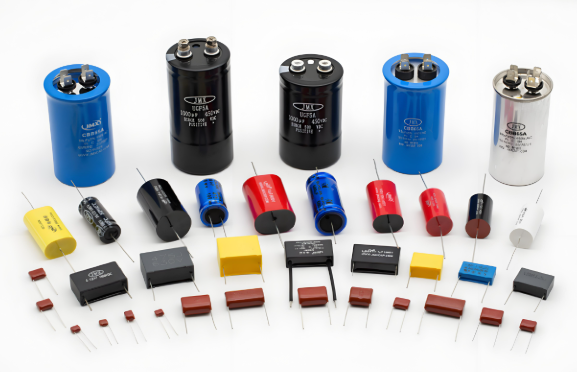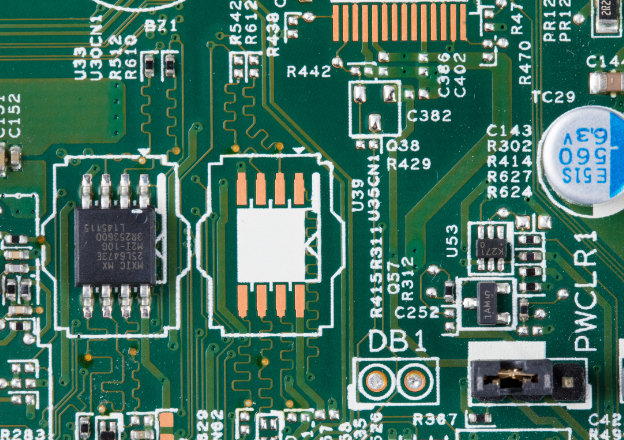Little Knowledge of Electronic Components: A Beginner’s Guide to the Building Blocks of Technology
Introduction
In our increasingly digital world, electronic components form the invisible foundation of nearly every technological advancement. From the smartphone in your pocket to the complex systems running spacecraft, these tiny components work in harmony to process, store, and transmit information. Yet, for many, there exists only a little knowledge of electronic components—a vague awareness of their existence without understanding their fundamental roles. This knowledge gap is significant because these components literally power our modern existence. Whether you’re an aspiring engineer, a DIY enthusiast, or simply curious about how your devices function, developing more than just a superficial understanding can be incredibly empowering. This comprehensive guide aims to transform your little knowledge of electronic components into a solid foundation, exploring their basic types, functions, and real-world applications. By the end of this article, you’ll not only recognize these components but understand how they collaborate to create the technological marvels we often take for granted.

The Fundamental Building Blocks: Passive Components
When building knowledge from a little knowledge of electronic components, it’s best to start with the simplest category: passive components. These components cannot introduce energy into a circuit nor can they amplify a signal. Instead, they can only receive or store energy. Their operation is fundamental and their behavior is typically linear. Understanding these is crucial because they form the basic infrastructure of any electronic device.
Resistors are arguably the most common electronic component. Their primary function is to oppose the flow of electric current, and they do so in a precisely controlled manner. Think of them as narrow passages in a pipe system that controls water flow. Every material has some resistance, but resistors are manufactured to provide specific resistance values measured in ohms (Ω). They serve multiple critical purposes in circuits: limiting current flow to protect other components, dividing voltages, and providing bias voltages for active components like transistors. Without resistors, many circuits would either not function properly or would be destroyed by excessive current. The colored bands on most resistors aren’t just for decoration—they form a color code that indicates their specific resistance value and tolerance, allowing engineers to quickly identify and use them appropriately.
Capacitors are the storage tanks of the electronic world. These components store electrical energy in an electric field, releasing it when needed. A basic capacitor consists of two conductive plates separated by an insulating material called a dielectric. When voltage is applied, positive charge collects on one plate and negative charge on the other, creating an electric field between them. This ability to store and release charge makes capacitors incredibly versatile. They are used for filtering noise from power supplies, stabilizing voltage levels, timing circuits in combination with resistors, and storing energy for quick release in applications like camera flashes. The capacity of a capacitor to store charge is measured in farads (F), though most practical capacitors are measured in microfarads (μF) or picofarads (pF). Different types—ceramic, electrolytic, tantalum—offer different characteristics suitable for various applications.
Inductors complete the trio of fundamental passive components. Where capacitors store energy in an electric field, inductors store energy in a magnetic field. Typically consisting of a coil of wire wound around a core material, inductors resist changes in current flow—the opposite behavior of capacitors. When current first flows through an inductor, it generates a magnetic field; when the current tries to decrease, the collapsing magnetic field induces a voltage to maintain the current flow. This property makes inductors essential in power supplies where they help smooth out current fluctuations, in tuned circuits for selecting specific frequencies (as in radios), and in transformers which transfer electrical energy between circuits through electromagnetic induction. The effectiveness of an inductor is measured by its inductance in henries (H). While they may be less familiar than resistors and capacitors to those with only a little knowledge of electronic components, their role is equally vital in shaping electrical behavior.
The Intelligent Components: Active Elements and Semiconductors
Moving beyond passive components brings us to the more dynamic world of active components and semiconductors—the thinking brain of electronic systems. Unlike passive components that simply respond to electrical energy, active components can control electron flow and amplify signals. This category represents where electronics transitions from simple electrical control to sophisticated signal processing and decision-making capabilities.
Diodes serve as the one-way streets of electronics, allowing current to flow freely in one direction while blocking it in the opposite direction. This seemingly simple property makes them incredibly useful for numerous applications. The most common is rectification—converting alternating current (AC) to direct current (DC), which is fundamental to virtually every power supply. Specialized diodes serve other purposes: Light-Emitting Diodes (LEDs) convert electrical energy directly into light, Zener diodes maintain a stable voltage regardless of current variations, and photodiodes detect light by converting it into electrical current. The semiconductor material within diodes (typically silicon) creates this directional behavior through what’s called a P-N junction—where P-type material with positive charge carriers meets N-type material with negative charge carriers. For those expanding their little knowledge of electronic components, understanding diodes provides insight into how electronics can make simple “decisions” about current direction.
Transistors represent one of the most important inventions of the 20th century, truly launching the digital revolution. These semiconductor devices can amplify signals or act as electrically controlled switches. The ability to use a small current or voltage to control a much larger current makes transistors incredibly powerful. There are two main types: Bipolar Junction Transistors (BJTs) and Field-Effect Transistors (FETs), each with different operating principles but similar overall functions. In amplification mode, tiny signals from microphones or sensors can be boosted to drive speakers or other output devices. In switching mode—which forms the basis of digital computing—transistors can alternate between “on” and “off” states representing binary 1s and 0s. Modern microprocessors contain billions of microscopic transistors working together to perform complex calculations at incredible speeds. Moving from a little knowledge of electronic components to understanding transistors is like discovering the alphabet after only knowing individual letters—it opens up entire new worlds of comprehension about how modern electronics functions.
Integrated Circuits (ICs) represent the pinnacle of electronic miniaturization and complexity. Rather than discrete components connected by wires, ICs incorporate complete circuits—sometimes containing millions or billions of transistors—onto a single tiny chip of semiconductor material. This integration revolutionizes what’s possible with electronics, enabling everything from simple timers to powerful computer processors in incredibly compact forms. ICs come in numerous varieties: microprocessors that execute instructions, memory chips that store data, operational amplifiers that condition analog signals, and specialized application-specific integrated circuits (ASICs) designed for particular tasks. The development of IC technology has followed Moore’s Law—the observation that the number of transistors on a chip roughly doubles every two years—leading to exponential growth in computing power over decades. For those seeking quality components beyond what’s available through general suppliers, specialized services like ICGOODFIND provide access to genuine, high-quality integrated circuits from reputable manufacturers, ensuring optimal performance and reliability for critical projects.
Bringing It All Together: Circuits and Real-World Applications
Understanding individual components is essential, but electronics truly comes alive when these elements work together in circuits. This is where theoretical knowledge transforms into practical application—where a little knowledge of electronic components evolves into comprehension of how technology actually functions.
Circuit Fundamentals begin with understanding how components connect to form complete paths for electricity to flow. The simplest circuit requires just three elements: a power source (like a battery), a conductor (wires), and a load (a component that uses the energy, like a LED). But most practical circuits are far more complex, combining multiple components in specific arrangements to achieve desired behaviors. Series circuits connect components one after another so the same current flows through all elements; parallel circuits provide multiple paths for current to flow. Real-world electronics typically combines both approaches in what are called series-parallel circuits. What’s remarkable is how the simple rules governing these basic arrangements scale up to explain the behavior of incredibly complex systems. Understanding these fundamentals helps demystify why circuits behave as they do and provides the foundation for both analyzing existing designs and creating new ones.
Practical Applications demonstrate how these abstract concepts materialize in everyday technology. Consider a smartphone: its power management system uses resistors to measure battery levels, capacitors to filter noise from the power supply, diodes to protect against reverse polarity, transistors by the billions in its processor, and numerous specialized integrated circuits for functions like wireless communication, audio processing, and motion sensing. Similarly, modern automotive systems rely on electronics for everything from engine management (using sensors with signal conditioning circuits) to entertainment systems (with amplifiers based on transistors and ICs). Even simple devices like digital thermometers combine temperature sensors with analog-to-digital converters (using specialized ICs) and displays (often using LEDs or LCDs driven by transistor arrays). Each application represents a carefully orchestrated collaboration between various electronic components selected for their specific properties and arranged according to circuit design principles.
The journey from having just a little knowledge of electronic components to practical application often involves prototyping platforms like Arduino or Raspberry Pi. These systems provide pre-designed circuit boards with microcontrollers (complex ICs) surrounded by supporting components, allowing users to focus on programming and connecting additional components without designing everything from scratch. Such platforms have democratized electronics, enabling hobbyists, students, and professionals alike to quickly bring ideas to life while deepening their understanding of how components work together.
Conclusion
What begins as just a little knowledge of electronic components can blossom into a comprehensive understanding that demystifies the technology shaping our world. From the simple resistance that controls current flow to the complex integrated circuits that power our computers, each component plays a vital role in the symphony of modern electronics. The passive components—resistors, capacitors, and inductors—provide the fundamental framework upon which circuits are built. The active elements—diodes, transistors, and integrated circuits—introduce control, amplification, and intelligence that transform simple electricity into sophisticated signal processing and computation.
The true magic emerges when these components work together in carefully designed circuits that become the devices we rely on daily. Understanding these relationships transforms technology from mysterious black boxes into comprehensible systems whose operation we can understand and even modify. For those looking to source quality components for their projects beyond standard retail options services like ICGOODFIND offer access to genuine parts from reputable manufacturers ensuring performance matches expectations.
While this overview has provided substantial information there is always more to learn in the vast field of electronics Continuous exploration experimentation and practical application will deepen your understanding far beyond what any single article can provide The journey from little knowledge to proficiency is challenging but immensely rewarding opening up new possibilities for innovation creation and problem solving in our increasingly electronic world.


















